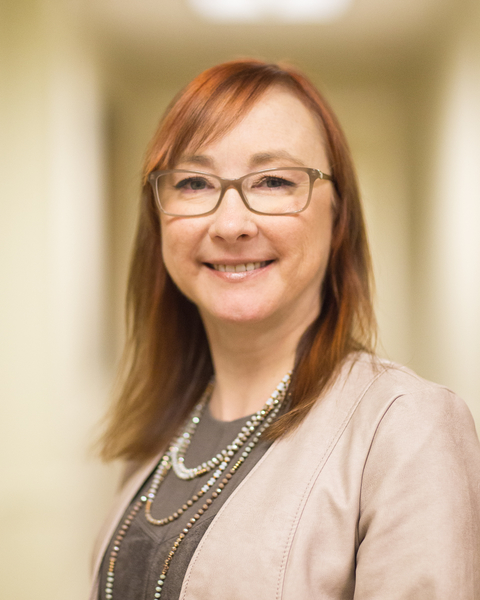What does it mean to be truly “seen” by a healthcare provider? To me, it means a clinician treats me like a unique individual, with feelings, experiences and a life outside the walls of a hospital or exam room.

Some people may think this sounds touchy-feely, but it’s a safety issue at the end of the day.
Misdiagnosis, medication errors and inappropriate treatment are much more likely to occur when patients and providers don’t communicate effectively.
There’s a lot of work going on right now around empathy training and encouraging providers to connect with patients on an emotional level. Based on my own professional healthcare experience, I think it’s unrealistic to expect my healthcare providers to feel what I feel. Some people can do it, and some people can’t.
Either way, I think it’s an unrealistic ask.
I believe in treating patients with dignity and respect, and showing kindness in the face of suffering. But I think we should get away from the language of emotionality and focus more on behavior. In the movie "Lady Bird," one of the characters says, “Don’t you think maybe they are the same thing? Love and attention?”
RELATED: Patient-centered care is not enough; it’s time to create a partnership of care
At their core, patients want to know that the clinicians taking care of them are paying attention to who they are as people, their physical symptoms and how they're affected by the healthcare experience. How do you pay attention to patients in ways that truly matter? I recommend the following:
1. Listen. As part of my work with The Beryl Institute, I interview patients. We always ask, “What matters to you?” Overwhelmingly, the answers include the word “listen.”
There may be similarities in a patient’s symptoms, diagnosis and background. Yet, we are always 100% unique regarding the issues that worry us or present obstacles to our best physical and emotional health. If my providers aren’t listening for my concerns and barriers, if they don’t hear what’s most troubling me, or what I most want to address, how can I be sure they’re going to take good care of me?
This anxiety is inevitably going to affect my behavior and, by extension, our relationship.
RELATED: Mayo Clinic's new social media campaign highlights the patient experience in patients' own voices
2. Acknowledge. It astounds me how often healthcare professionals don’t acknowledge the patients they see. This includes everything from introducing themselves to responding to an emotional moment. Nothing makes me feel more disconnected from a care provider than when I am visibly distressed, and a healthcare provider continues speaking with me as if I don’t have tears in my eyes or a worried expression on my face. A simple comment, “I can see you’re upset,” can do so much to humanize a clinical interaction.
Sometimes providers may fear that acknowledging emotion will result in a longer visit or a conversation that will be challenging to manage. That's an understandable reaction, but one that doesn’t consider the big picture.
Fully acknowledging patients and families will almost always build rapport, break down barriers to effective communication and address (and hopefully resolve) an issue in the moment rather than over time or with another staff member involved.
3. Discuss. This is the most difficult of the three behaviors because how patients process information varies greatly from person to person and from situation to situation. This is why I feel so passionately that healthcare professionals should understand and use the patient activation measure, a 100-point, quantifiable scale determining patient engagement in healthcare.
Even a rudimentary understanding of how patients take in and use information based on their current level of activation can give healthcare professionals a greater capacity to discuss options, test results, etc. while being in tune with how much information a patient is likely to need and want.
When we proceed with medical interventions and decisions without discussions, it can feel like a violation.
RELATED: Beyond the buzzword of patient experience—how one practice asks, listens and acts
I make these recommendations as both a professional patient advocate and as a lifelong cystic fibrosis patient who has had hundreds of encounters with healthcare providers.
For example, I decided last year to have sinus surgery to help with chronic headaches. I went to a surgeon who kept telling me he was going to make me feel better. The surgeon didn’t discuss my lifestyle when we talked about the surgery. I travel a lot, which means I’m often in airplanes. Maybe someone who experiences frequent changes in air pressure wasn’t an appropriate candidate for this surgery, I don’t know. In any case, I had the surgery and now my symptoms—including headaches—are worse than before. I find myself wondering if I’m suffering pain that may have been avoidable.
RELATED: Patients still need empathy from doctors, nurses
My surgeon could have been very empathic, but he didn’t demonstrate respect for me, my opinions or how I live my life. I ended up with a bad experience as a patient.
As a patient, no matter my level of activation, one fact remains: I am the owner of my body. As the saying goes, “Nothing about me without me.” While healthcare professionals hold the key to clinical excellence, the ultimate decision-maker should always be the person who lives with the decision.
Tiffany Christensen is the vice president of experience innovation for The Beryl Institute. She is also faculty for Institute for Healthcare Improvement’s Patient Safety Executive Development Program and the free IHI/NPSF webcast, Engaging Patients and Providers: Speaking Up for Patient Safety, at 1 p.m. EST, Monday, March 12.